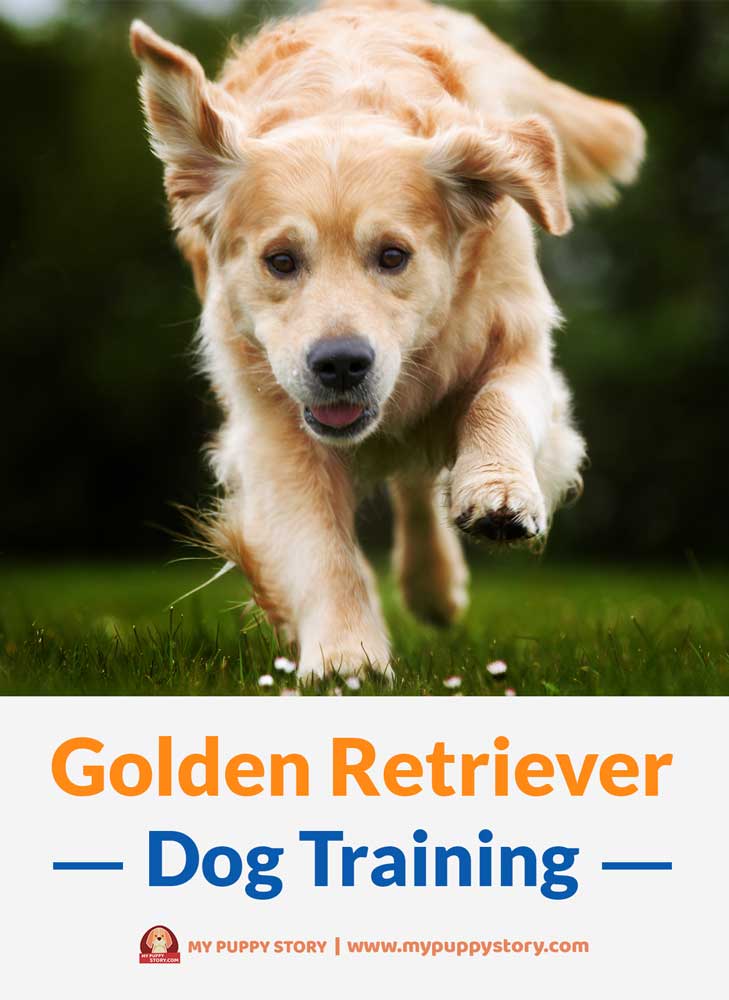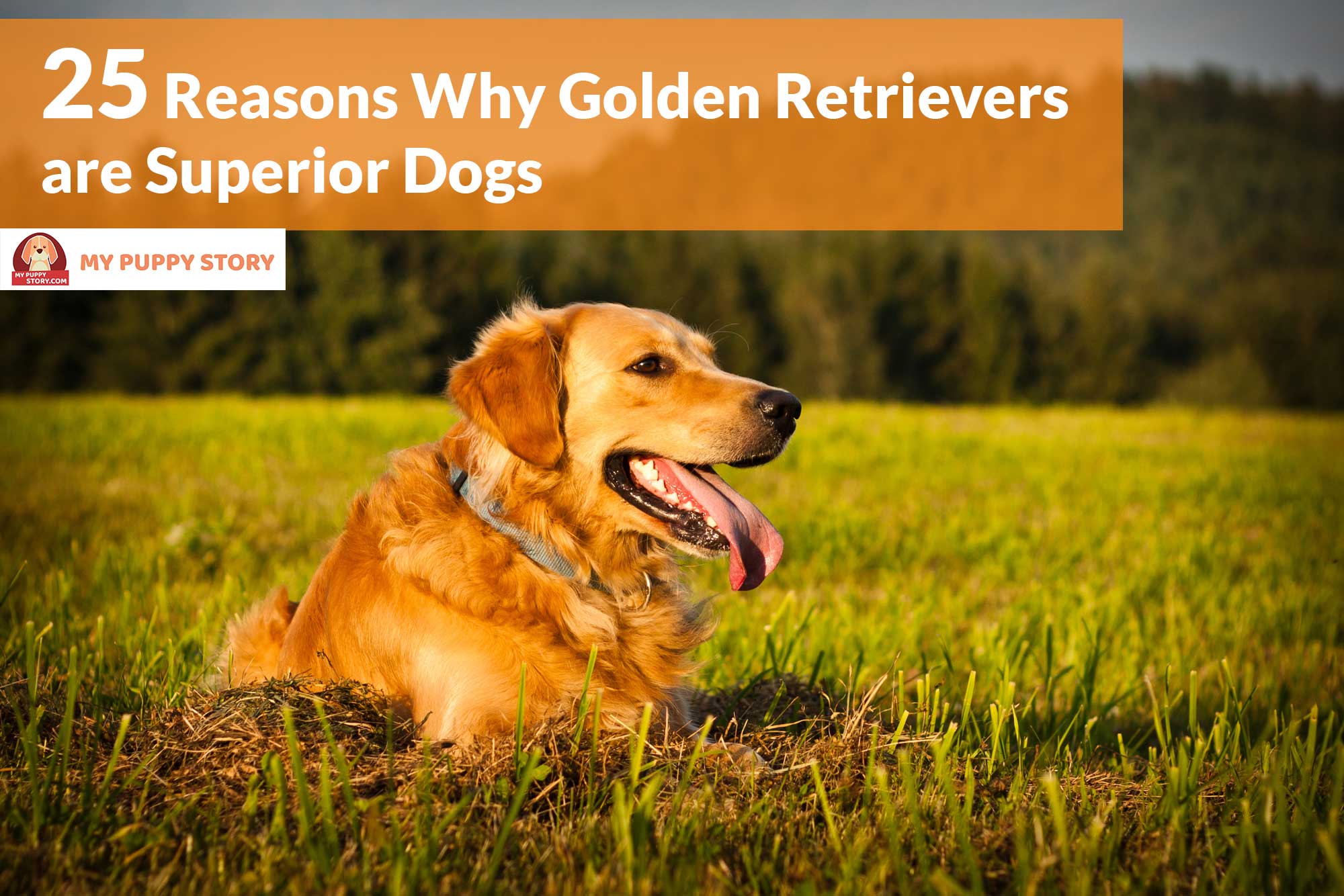25 Reasons Why Golden Retrievers Are Superior Dogs
Should You Get a Golden Retriever?
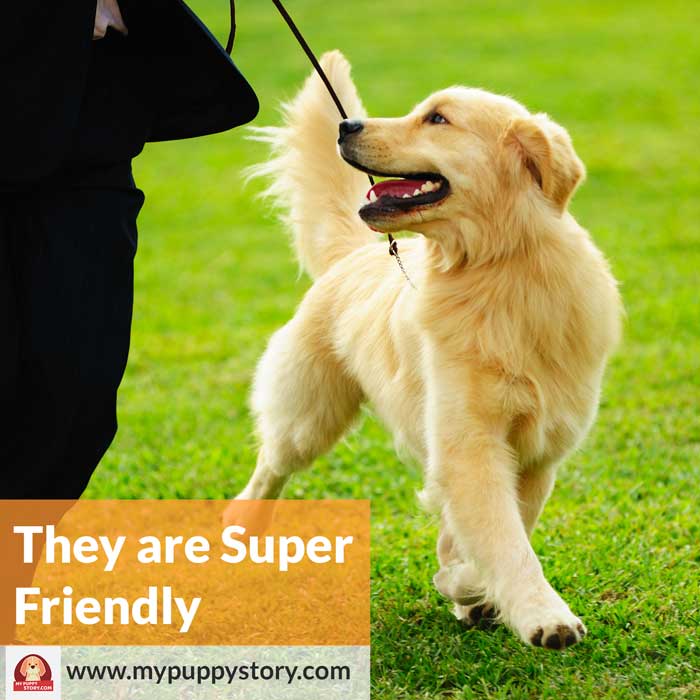
1. Super Friendly
If you have been looking for the best friendly pet to bring into your family, then you should think about Golden Retrievers. There are many reasons why Golden Retrievers are superior to other dog breeds, and one of the reasons they make everyone fall in love with them is because they’re super friendly. They will let you in close and will become your best friend. They love playing with you and don’t get angry often. Their easy-going personality is something you will appreciate, as is their eagerness to please you and your family. And that is why you should own a Golden Retriever.

2. They are Quiet
A golden retriever is a type of a large-sized breed of a dog that is usually calm and quiet, easy to train from basic to advanced levels of obedience. They have an enormous love for water and games with familiar faces. The golden retriever is a breed of dog with a long coat and a denser inner coat that offer them enough warmth in the outdoors which probably contribute to their calm and quiet nature. It’s gentle and friendly nature makes it unsuitable as a professional guard dog. However, it is quiet, calm and very lovable, thus making it one of the most popular dogs in the history of the United States.

3. They are Eager to Please
There are some pets out there who are simply a mess, or those that are very clingy and take up a lot of attention, time and energy of their owners. Not the Golden Retriever! This particular breed of dogs are so intelligent that they are always looking for ways to please their owners and make them happy. Goldens will always ensure that you enjoy having them around. They will willingly and enthusiastically obey your commands (with proper training, of course) and always be there for you when you need them, be it during happy or sad times.

4. Great with Children
Most children love dogs, but not all dogs love children. If you have kids, you would definitely want a pet that is friendly and playful; one that is able to offer good company for your children. Golden Retrievers are not only cheerful around children, they are equally gentle as well. Not only that, their intelligent nature means that a Golden Retriever would know how to look over, protect or even save kids and newborns, should the need arise.

5. Sweet and Loving
There are many reasons for a person to choose a Golden Retriever as a pet, and one of those reasons is the fact that they’re sweet and loving. If you are looking for a kind of dog who is going to love you after a long day’s work, or on pretty much any occasion, there is no other like the Golden. Eager and enthusiastic, a Golden Retriever is known to put on its part hats and celebrate with you when you are happy, and step in to cheer you up whenever you are feeling downsome- definitely a reliable, 24/7 furry friend.

When a new pet is brought into a home, it is important that the pet gets along well with the family. Intelligent and gentle, Golden Retrievers are quick to warm up to your other household pets, including cats or other smaller animals. Their calm nature will also mean less, or no “furry quarrels” at home. In addition to the good company, Golden Retrievers will often help you look out for pets too. Golden Retriever Training Tips

7. Their Sense of Smell is Impeccable
Golden Retrievers are amazing dogs who are intelligent, enthusiastic and playful. This breed of a dog has a keen sense of smell as well. Although less relevant as a household pet, this unique talent explains why you often see Golden Retrievers at the airport, border crossings and seaports, where they help in tracking down fugitives, or cracking drug trafficking etc.

8. Hardworking
Dogs are known to be man’s best friends for the longest time. Many keep dogs for security, company and companionship; and dogs work hard to “earn their keep” over the decades. Outstanding as they are, Golden Retrievers are typically more hardworking and attentive than most average dog breeds, allowing them to excel in more advanced tasks like hunting, tracking, detection of narcotics, search and rescue, as well as to guiding the blind. Regardless of the task at hand, you can always expect a Golden Retriever to give it all its got.
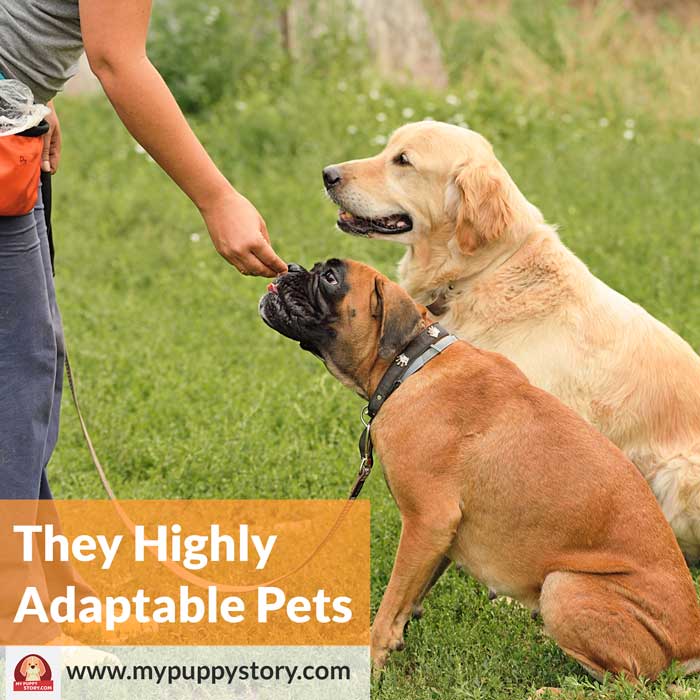
9. Highly Adaptable Pets
Fancy a pet that can adapt to any surroundings as good as you can? The Golden Retriever is tolerant towards the hot and cold, and wouldn’t mind accompanying you on one of your work or road trips. They are not fussy pets either, and will be easily contented staying indoors or outdoors on a typical day. Their ability to adapt to any given environment is one of the quality that makes them stand out.

10. They’re Attentive to Their Owners
Golden Retrievers were bred to be attentive towards its owners- one of the breed’s biggest strengths. Fully attentive and enthusiastic, these furry companions are eager to please and will bond closely with their masters. Goldens make faithful companions. If you want togetherness, you will enjoy the attention your canine will give you. He will follow you from room to room and sit with you in the kitchen. This is the best dog to bond with as it is downright needy in its desire for human attention.
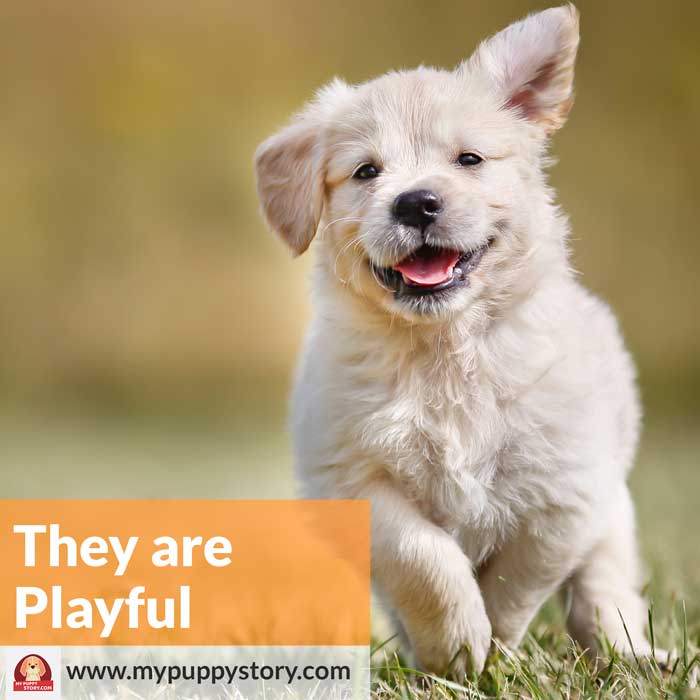
11. Playful
Golden Retrievers are playful, radiant and energetic, making them a favorite companion among kids and adults alike. As Goldens are intelligent, they pick up fast how certain games and toys are played, and will be in the game before you know it.
Do “terrestrial” games bore you? Fret not, for you will have plenty of time to play and bond with your pooch as well in the water, considering how Goldens are adventurous and love the water!

12. They’re Sporty Companions
You don’t have to worry about your dog not being able to keep up with you as you jog in the park or as you hike a mountain. As a large and sporty breed, Goldens love to exercise; after all, they were bred to hunt in the old days. In fact, you cannot expect a Golden Retriever to live a sedentary lifestyle as the athletic canine would require a daily exercise of at least half an hour. The fact that the Golden Retriever thrives in a sporty environment makes them the perfect exercise friend. Golden Retriever Training Tips

13. Strong
Golden retrievers are symmetrical, powerful dogs bred for tough working conditions. Its body consists of muscular, well-coordinated forequarters that enhance its agility immensely. The hindquarters are broad and muscled with equally strong rear pasterns to make up for a solid base and sturdy gait altogether. The medium-length neck merges gradually into the muscular shoulders and its strong back is one of its visible attributes. All said, Golden Retrievers have well-balanced bodies and it’s not hard to see why it ranks among the most popular hunting breeds globally.
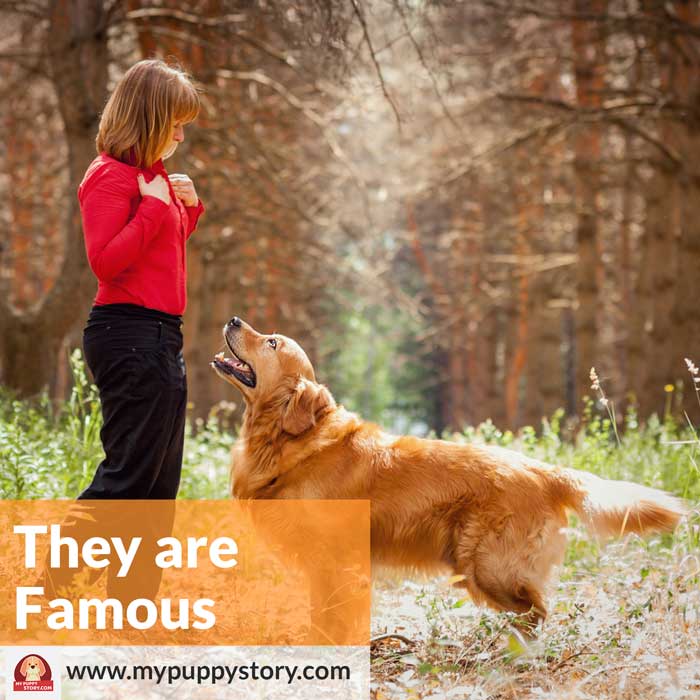
14. Famous
The Golden Retriever does not require much introduction because it is already well known thanks to its long list of wonderful personalities. Apart from being one of the most popular dogs among the regular Joe, Goldens are often starred in TV series and are happily owned by celebrities and even Presidents like Gerald R. Ford. Wouldn’t it be awesome to own an amazing dog loved by so many?

15. They’re Great Hunting Dogs
One look and you can tell that a Golden Retriever is meant for hunting. It possesses an extremely eager personality to begin with; it’s like it just wants you to give it the go-ahead to pounce onto something. In regards to its comprehensive appearance, the dog is extremely powerful with a balanced gait that gives it an edge while out in the wild. It isn’t long in the leg, or clumsy. The hindquarters in particular are strongly muscled and broad, with well angled stifles to complement. It’s simply a highly active dog, bred for hard working conditions such as hunting and it’s not that hard to see why.

16. They’re Full of Energy
This superior breed of dog has great energy and endurance. The reason why they’re full of energy is because in the early days when the breed was developed, they were used to spending long periods of time outdoors, often working for their masters at strenuous activities that required physical effort and stamina.
The fact is that they thrive on activities like this because they’re full of energy. The flip side to this is worth pointing out here too. If their exercise needs are not met in the context of their high levels of energy, this dog can become destructive, especially if he is a young dog and kept in a confined space. The simplest way of putting it is to say that the Golden Retriever is primarily an dog for outdoors because they’re full of energy instinctively due to their breeding and experience.
Whether or not you can meet their exercise and stamina needs is worth considering carefully before you decide to have this superior dog as a pet.

17. They Love the Water
Having a natural affinity for water is one of the characteristics that makes Golden Retrievers such a superior breed of dog. This is because they can be trained to assist people doing work in or near water such as retrieving waterfowl as a gun dog.
The fact that they love the water is also a positive factor when considering a Golden Retriever as a pet. Long jogs and hikes may not be a thing for everyone to keep fit and in shape. All you have to do is take advantage of the fact that Goldens love the water and let them swim in a nearby lake or in the sea to get all the exercise they need. The Golden Retriever’s thick water-repellent coat keeps his body warm while swimming which comes so naturally to this superior animal.

18. They have Beautiful Coats
Most of us look not only for pets but rather for beautiful pets. Although beauty is in the eye of the beholder, most would prefer to opt for an aesthetically better pet as a lifelong companion. This is where the Golden Retriever shines. This amazing canine does not need its long list of wonderful attributes to amaze you, as its brilliant and outstanding coat would do the job.
Golden Retrievers are known for their lustrous, distinctive fur coats that come in different shades of gold, which are fairly easy to maintain with regular grooming. Gloating and attractive, a Golden Retriever will surely compliment the beauty of your home, in addition to being an amazing companion.

19. They have Noble Stature
Most pet owners love the attention their pet gets, and would certainly be delighted to know that Golden Retrievers are bound to “turn-heads”. Golden have a noble stature and are very easy to notice since they stand out from other breed of dogs, thanks again to the attractive and glistening fur.
The maximum height of a male Golden Retriever is 24 inches whereas a female is typically 23 inches, so expect your pooch to stand out, particularly among a sea of common poodles and pugs.
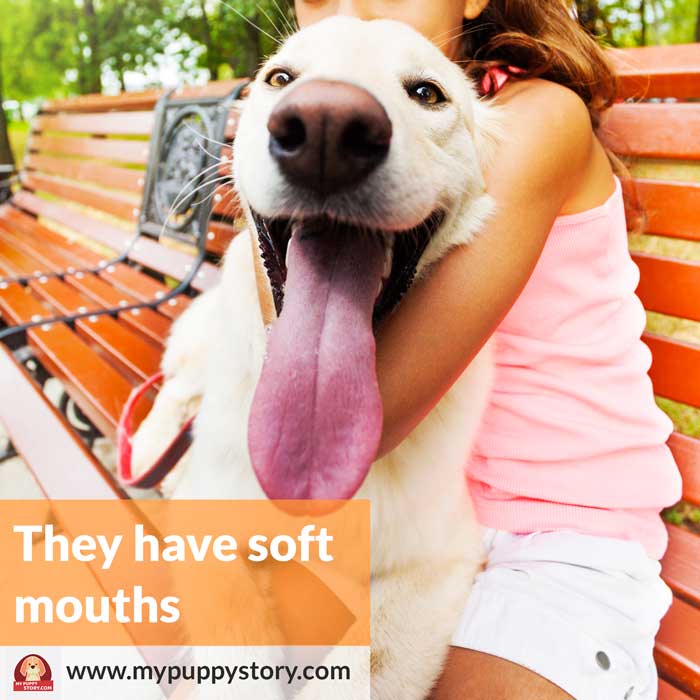
20. They have soft mouths
Golden Retrievers are superior dogs because they are loving and playful. They have soft mouths (or rather, tongue) and are certianly not shy to use them. So expect plenty of licks and kisses from this lovable and eager canine.

21. They Live Long Lives
More often than not people have always preferred to have pets that will be their companions for a longer period of their lives. That is why many prefer Golden Retrievers as their pets as they are generally healthy and can live up to 10-12 years, on top of their already impeccable list of attributes. This will ensure that many more years of sweet and memorable moments with your companion. In addition, Golden puppies will ensure that the joy in your home continues.

22. They’re Obedient
With the exception of the young and exuberant, Golden Retrievers are typically obedient who learn quickly and thrive on pleasing their owner. This is very important because their size and strength would make them difficult to manage if they are disobedient.
To get the best from your Golden Retriever, it is important to train him from early age to respond appropriately to your commands- a pretty simple task considering the dog’s temperament and high intelligence.
However, it is also a good idea to let a Golden use it’s own initiative sometimes rather than always being obedient. An example of this would be to let him wander freely in a natural park or on a secluded beach where he won’t disturb other users. Although not advisable for young dogs or puppies, this is a good idea for older Goldens because the innate loyalty and obedience of this superior breed means they will come back to you with no difficulty at the end of the day.

23. They’re Easy to Train
Golden Retrievers ranks fourth on a scale of measuring trainability for obeying commands and well deserves that reputation. They are so easy to train because they are (i) intelligent and are avid learners; ; and (ii) very eager to impress their owners, which is why Goldens always give their best in learning.
When you are training a Golden Retriever to learn a specific task or activity, you can expect to have to use fewer repetitions of your command as compared to training a lesser dog breed.
In addition, Goldens like being kept occupied and indeed need this as a stimulation.

24. They’re Fiercely Loyal
Golden Retrievers are fiercely loyal to their owner or master. This is an instinct that is learned from the environment they were bred in and for. Spending time with your Golden Retriever whether he is a pet in your home or part of your workforce will foster a fierce loyalty in your dog and forge a bond that both you and your dog will benefit from.
The loyalty of a golden retriever will be clear in its performance as a watch dog. They will bark at strangers as a form of loyalty but are generally aggressive because it is not in a Golden’s nature. However, there are many stories of Golden Retrievers rescuing their owners in difficult or dangerous situations thanks to its combination of intelligence and loyalty.

25. They’re Well-Mannered
Who doesn’t love a well-mannered companion? With proper training, Goldens can learn and understand what their masters love or hate, as well as how to behave in front of unfamiliar people, making them even more effective companions than they already were. It is always an added advantage to have a pet that does not paint a bad picture in front of your friends and family.
Should You Get a Golden Retriever?




